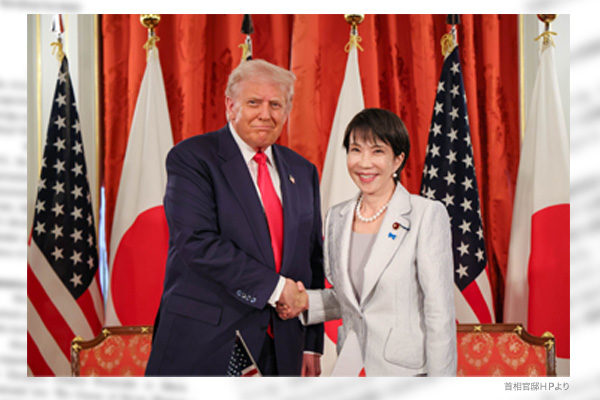China is about to accelerate overinvestment and overproduction in a manner to further disrupt the global economy, as indicated by the 15th Five-Year Plan for Economic and Social Development for 2026-2030 launched at the Fourth Plenary Session (October 20-23) of the 20th Chinese Communist Party Central Committee led by President Xi Jinping. While Japanese Prime Minister Sanae Takaichi and U.S. President Donald Trump at their October 28 meeting in Tokyo agreed “to take further steps for a new golden age of the Japan-U.S. alliance,” there remains an urgent need to develop a common strategy to counter China’s economic threats.
China continuing an export flood
The Fourth Plenary Session unveiled a New Nationwide System, aiming to build a supply chain resilient to U.S. sanctions and realize a “strong nation” strategy centered on emerging industries such as advanced semiconductors, artificial intelligence (AI), quantum computing, biotechnology, and new energy—collectively referred to as “new-quality productive forces.” The centerpiece is a policy to boost national productive forces. In the case of automobile production, China currently manufactures 31 million vehicles annually, surpassing the combined total of Japan, the United States, and Germany at 27 million. The goal is to reach 40 million units within five years, with exports rising from 5.85 million to over 10 million. In short, the production expansion depends on exports.
In the midst of the bottomless recession caused by real estate bubble burst, the Xi government has provided government subsidies for electric vehicles, solar photovoltaics panels, and other sectors, encouraging new entrants and production expansion. As a result, overinvestment and cutthroat competition have continued, leading to deflationary price drops at home and an export flood that neglects profitability.
Production expansion alone does not increase gross domestic product (GDP), or the sum of added value corresponding to gross business profits. As the unemployment rate among young people is over 20%, more than half of new graduates cannot find jobs. Real estate investment, which underpins fixed asset investment accounting for 40% of GDP, continues to decline, while direct investment by Western companies is keeping a double-digit year-on-year decrease. While vowing to increase domestic demand, the Fourth Plenary Session made no mention of fiscal or monetary policy. China’s unique financial system, which depends on the inflow of foreign capital, cannot take countercyclical easing measures like those seen in Japan.
Follow Abe’s policy
The option left for Xi is to take an offensive foreign policy. On October 9, China tightened export controls on rare earths for which China has a monopolistic share of the global market. Trump has countered by threatening to impose 100% additional tariffs on China. Trump is expected to withdraw the additional high tariffs in exchange for a one-year postponement of the tighter controls on rare earth exports when he meets with Xi on the sidelines of an Asia-Pacific Economic Cooperation summit in South Korea at the end of October. However, the Xi government will never stop its offensive foreign policy. Following the example set by the late former Prime Minister Shinzo Abe, Takaichi should take the lead in proposing a common economic strategy toward China to Trump.
Hideo Tamura is a Planning Committee member at the Japan Institute for National Fundamentals and a senior correspondent for the Sankei Shimbun newspaper.


